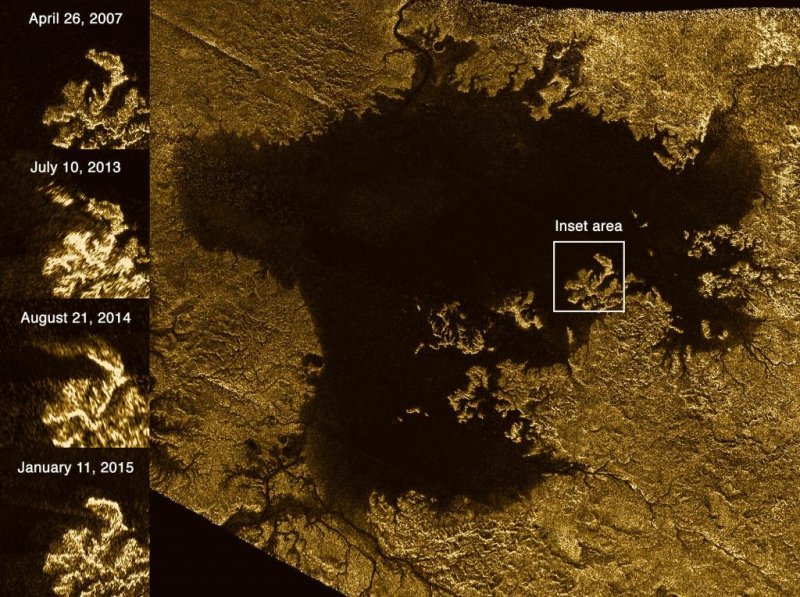A collage of Cassini images shows how the "magic island" in Titan's Ligeia Mare has changed shape over the years. Photo by NASA/JPL-Caltech/ASI/Cornell
PASADENA, Calif., March 3 (UPI) -- New images captured by the Cassini probe showcase the shifting shape of a geological feature on Saturn's moon known informally as "magic island."
The brightly colored, pinwheel-shaped island is a transient feature in Titan's Ligeia Mare, a hydrocarbon sea located in the moon's north polar region.
The shape-shifting island has long puzzled astronomers, but NASA scientists think a series of cresting waves is the most likely explanation. Researchers say bubbles or solids on or beneath the surface could also explain the light-colored feature, but have ruled out tides, sea level and seafloor changes as likely causes.
Cassini's latest photograph of Ligeia Mare appears enlarged on the right, while a series of closeups of the magic island span the column to the left. The closeups run in chronological order -- from earliest on top to latest on bottom -- revealing the island's shape in 2007, 2013, 2014 and 2015.
At 50,000 square miles, Ligeia Mare is the second largest hydrocarbon sea on Titan -- second to Kraken Mare, where scientists have also observed shifting island-like features.
"These features are the first instances of active processes in Titan's lakes and seas to be confirmed by multiple detections," officials at NASA's Jet Propulsion Laboratory wrote in an update. "Their changing nature demonstrates that Titan's seas are not stagnant, but rather, dynamic environments."
The Cassini probe has been orbiting Saturn and its satellites since 2004; its mission will continue at least through the end of 2016.















